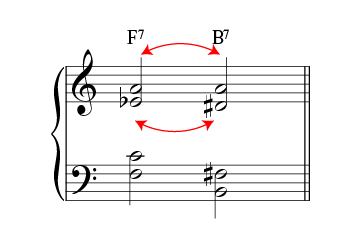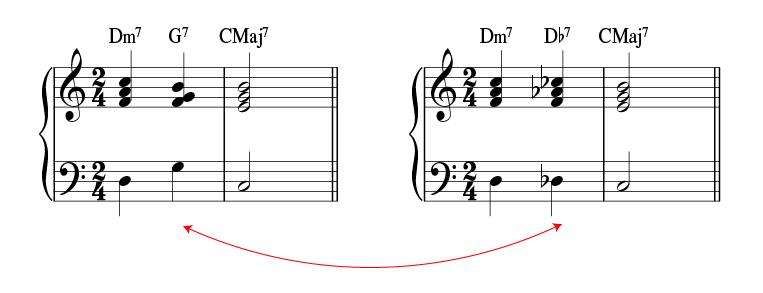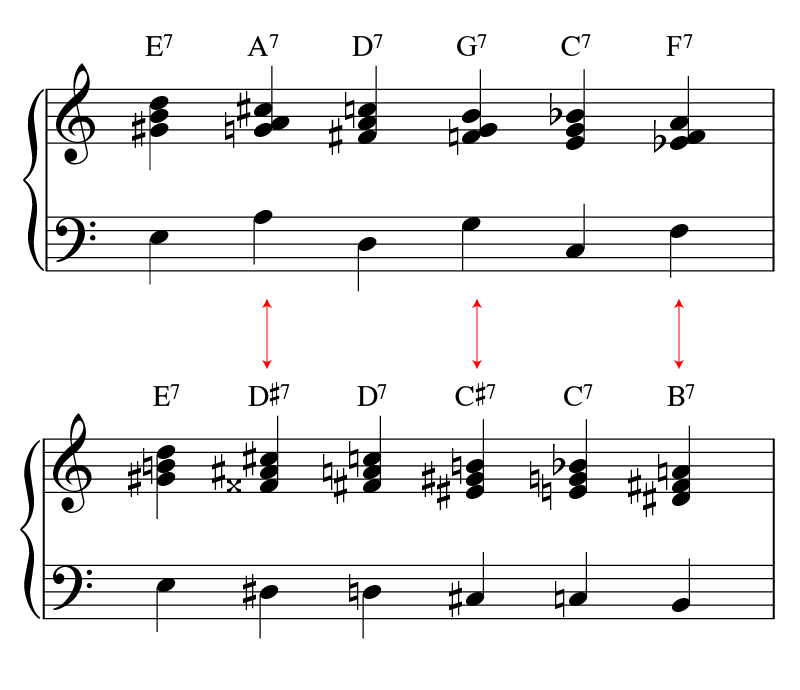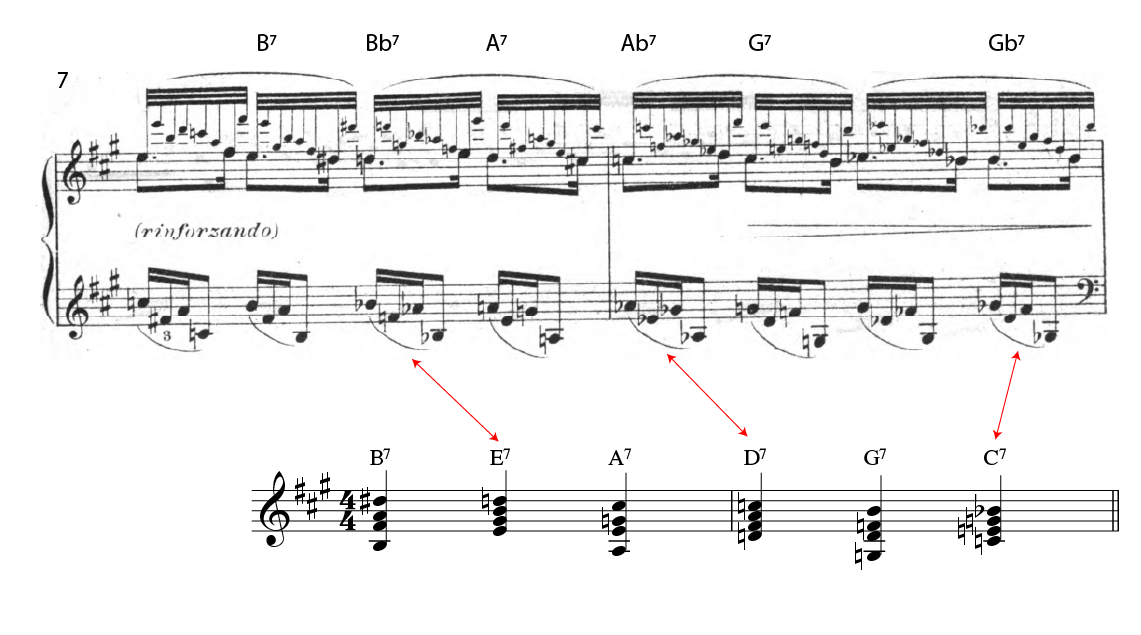Harmonic Functions : Tritone Substitution
Jazz theory explains that we can substitute a dominant seventh chord with another dominant seventh chord that shares the same tritone. In the following image, we show both chords. They share the tritone A-Eb/D#. Also, the chords are at the distance of a tritone from one another:

A short example where Db7 substitutes G7:

A dominant chord descending by half-step is probably a tritone substitution.
In the following image, we show a cycle of fifths progression, starting on E7 and ending in F7. In the second system, we show the same chords but applying tritone substitution to every other chord. The result is a series of chromatically descending dominant chords:

Some examples
Cb7 instead of F7:

Gb7 instead of C7:

The following excerpt is from Chopin's Prelude No. 8. A series of descending dominant sevenths is a variation of a cycle of fifths using tritone substitution (Bb7 = E7, Ab7 = D7, Gb7 = C7):

Chopin uses tritone substitution in other preludes like No. 17 and 22.
The tritone substitution concept is similar to the augmented sixth concept in classical harmony. See Tritone Substitution and Augmented Sixths for more information.
